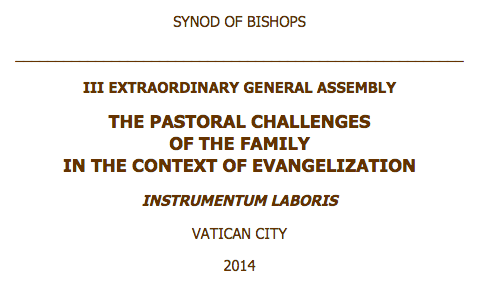Hemant Mehta's Blog, page 1914
October 2, 2014
A City-Sponsored Hydraulic Cross May Soon Be Used to Promote Abortion, Gay Marriage, and Atheism
Last month, I posted about a giant hydraulic cross that goes up several times a year atop Dewey Hill in Grand Haven, Michigan:
The cross came into being in the early 1960s as a gift to the city (and it quickly became the centerpiece for a giant nativity scene). The city pays for the cross’ upkeep now by quietly adding its maintenance costs to the contracts of any group that rents nearby Waterfront Stadium, even though the groups wouldn’t know it.
In other words, if you want to rent the public facility, you’re paying for the preservation of a Christian cross.
City officials maintain that it’s not just a Christian symbol. For example, during the annual Coast Guard Festival, they “dress up” the cross like an anchor.
Seriously.
That would be fine if it was an anchor year-round… but the costume is temporary. And the Mayor seems to think this is all perfectly legal:
“It does not cost the taxpayers of the city anything,” said [Grand Haven Mayor Geri McCaleb].
…
“Usually it is people from out of the community [who complain about the cross], and they are offended and so they bring it up,” she said. “We look at our policies and make sure that we are abiding by court decisions and that we are not being illegal in any way.”
The taxpayers aren’t directly paying for it, but anyone who wants access to the stadium, a city-owned facility, is. There’s really no difference. Even if a church paid all the maintenance costs, it’s still a promotion of Christianity by the city, no matter how they want to dress it up. It’s not like city officials would allow a hydraulic Star of David or statue of Baphomet, right?
Well, now they’re going to have to use the equipment that’s reserved to erect the cross to promote traditionally anti-Christian ideas.
Readers of this site may remember Mitch Kahle and Holly Huber, who used to live in Hawaii and were church/state separation watchdogs there, too. They created a Facebook page last month to challenge the Hydraulic Cross. Now, the two of them, along with local residents Brian and Kathy Plescher and attorneys from Americans United for Separation of Church and State, are making an ingenious request: They want the hydraulic system to be used to promote their views (which also means the cross must come down at those times):
At this time, our clients will provide their own displays. Specifically, they would like to attach the following displays — consisting of banners, flags, or symbols — to the hydraulic lift, and have the lift be placed in the raised position, during the following dates and times:
Sunday, October 26, 2014, 9 a.m. to 5 p.m. — a display promoting LGBT pride and marriage equality.Sunday, December 21, 2014, 9 a.m. to 5 p.m. — a display celebrating the winter solstice as “The Reason for the Season.”Sunday, January 25, 2015, 9 a.m. to 5 p.m. — a pro-choice display promoting reproductive freedom and women’s rights.Sunday, March 22, 2015, 9 a.m. to 5 p.m. — a display promoting marriage equality to commemorate the first anniversary of same-sex marriage in Michigan.Sunday, April 5, 2015, 9 a.m. to 5 p.m. — a display promoting atheism and equal rights for atheists.Thursday, May 7, 2015, 9 a.m. to 5 p.m. — a display promoting atheism and equal rights for atheists.Additional displays and dates may be requested. At least one of our clients will be in Grand Haven throughout the time each display is up.
…
Our clients further request that, before each of their displays is attached to the hydraulic lift, the City remove the cross that is currently attached to the lift, so that our clients’ messages are not conflated with or distorted by the preeminent symbol of Christianity.
How fantastic is that response? Promote atheism, same-sex marriage, and abortion rights with the same system that was installed to promote Christianity. If city officials says no, there’s a legal case to be made that they’re just trying to promote Christianity. If they say yes, the predominantly conservative Christian city will flip out.
The local newspaper, as you might imagine, is all over this:
Americans United associate legal director Alex Luchenitser said he emailed the letter to City Manager Pat McGinnis and Mayor Geri McCaleb at 11 a.m. Tuesday. Email addresses were confirmed to be correct.
On Tuesday afternoon, McGinnis and McCaleb both said they had not received any such letter from Americans United for the Separation of Church and State, and would not comment on correspondence they had not seen.
Luchenitser said he also sent the correspondence via regular mail, which should arrive at City Hall in a day or two.
There should be a lot of excitement in Grand Haven over the next few weeks.
(Large portions of this article were published earlier)
October 1, 2014
A Christian Minister Explains Why Church and State Should Remain Separate
Christian minister Dr. Robert Wilkerson, who runs an organization called People for the Christian Way (which, as far as I can tell, doesn’t actually exist), published a short but terrific piece at Al.com about why prayer doesn’t belong in public school.
Here are just a couple of his reasons:
It would violate the Constitution. That document clearly calls for the separation of church and state. Those who wrote it knew history. They knew how horrible and oppressive life could be when the two were not separated. All attempts to circumvent this provision have been struck down by the courts and will continue to be.
…
It would be a terrible burden on the schools. Teaching and monitoring religion is not the purpose of public schools, and they are not trained or equipped to do it.
Well said. It’s not often we see these sorts of pieces, and that’s very puzzling. Separation of church and state is essentially what allows Christianity to thrive in our country. Imposing religion through the government would probably do more harm than good to the faith, cheapening it for believers in a lot of ways, so you’d think more pastors would appreciate the independence they currently have. At least Wilkerson gets that. If only other pastors would follow his lead and make similar pronouncements.
(Thanks to Brian for the link)
Please Support the Work I Do Through This Site
I’ve posted this in the past. If you’ve already responded, there’s no need to do it again. Thanks!
…
Over the past couple of years, what began as a personal blog has turned into a hub with several contributors and multiple posts per day. As always, I’d like to continue expanding the reach of this site. That entails bringing on additional contributors with different voices, including more guest posts from people who can offer interesting and different perspectives, creating more YouTube videos, and making the podcasts sound more professional.
In order to facilitate all of this, I’ve created a page at Patreon.
If you’d like to help out, you can pledge a certain amount every month (with rewards along the way!) from $1 to $100.
As always, I’m grateful for the kind words and support you all send my way. I don’t usually post about them, but trust me: they never go unnoticed. Many of you have emailed me asking if there’s any way to donate to this page, and I always say no, but I think Patreon offers a really incredible approach to reach out to more people in different ways. Thanks in advance for your help.
More Than $1,000,000 Given to Mostly-Religious Voucher Schools in North Carolina, Despite Legal Limbo
Last year, North Carolina lawmakers earmarked $10,000,000 for vouchers, offering up to $4,200 of taxpayer money per-student-who-qualified to private schools.
Because many of those schools have discriminatory admission standards (70% of the voucher-accepting schools are religious), take money away from public schools, and don’t abide by state educational standards, Superior Court Judge Robert Hobgood put a stop to the program earlier this year. After some legal back-and-forth, though, he just gave a green light for the first million dollars to be distributed:
About $1.1 million was distributed last Friday to 109 private schools that accepted students under the Opportunity Scholarships program, State Educational Assistance Authority grants director Elizabeth McDuffie said Monday. That distribution was to cover part of the tuition for 568 students, according to the state agency administering the program.
The schools were primarily Christian, Baptist, Catholic or Islamic. The Greensboro Islamic Academy received the most money, $90,300 for 43 enrolled students. Word of God Christian Academy in Raleigh received $54,600 for 26 students.
Because the vouchers are going to poor students, they’re the ones caught in the middle of this legal battle. If the courts ultimately rule that the vouchers are unconstitutional — as I believe they are — it means the schools will have to give the voucher money back to the state, and those kids’ families will have to either pay the difference or move their kids back to a public school.
That said, considering that it’s often Christian groups that push for voucher programs, it’s very interesting that an Islamic school is the largest recipient of the funding so far. I haven’t heard any complaints about that yet, but it’s something to keep an eye on.
(Image via Shutterstock. Thanks to Malinda for the link)
Muslims and Hindus Riot in India Over a Jokey Facebook Picture
As they’ve often done since at least the eighth century, Mo fans and Shiva supporters have been violently clashing in India:
The police have made hundreds of arrests in the past several days in an attempt to stop religious riots in the Indian city of Vadodara, in Prime Minister Narendra Modi’s home state of Gujarat. So far, the violence has been confined to stabbings and the torching of around a dozen vehicles, D.J. Patel, a senior police official in Vadodara, said on Monday.
“We have deployed a large enough number of police to control any situation,” he said. He said none of the injuries were serious. The clashes began last week, after a Hindu man posted an image to his Facebook account showing the face of a Hindu goddess superimposed on a stone venerated by Muslims, Mr. Patel said.
Maybe there are two religions of peace? God help us.
(Image via Shutterstock)
Texas District Responds to Church/State Violations at Elementary School by Shutting Down Its Facebook Page
A couple of weeks ago, I posted about the numerous church/state violations taking place at China Elementary in Texas’ Hardin-Jefferson Independent School District.
Just to offer some quick examples, the school’s Facebook page was full of mentions of the teacher-led “Hawks for Christ” group, not to mention pictures of teachers wearing club shirts — both of which are illegal:
Obviously, the concern here is that the kids will think their school is promoting Christianity, and that’s why it crosses the line. No one’s saying the kids or teachers can’t pray on their own time.
The Freedom From Religion Foundation sent a letter to district officials describing a few of the (many, many) problems at this school, and I’m happy to say the school district finally took some action!
They shut down the Facebook page.
Ongoing controversy regarding a Hardin Jefferson ISD religious group has resulted in administrators removing the China Elementary Facebook page.
The page was used to promote school activities including Hawks for Christ, which supports Christianity among students and meets before class once a week.
That’s it. That’s all they did. The superintendent said he would review policies and procedures without offering any more specifics, so for now, the only action taken by the district is hiding the illegal activities from public view.
It makes as much sense as closing your blinds so your neighbors can’t see how dirty your house is. It doesn’t fix the actual problem; it just makes you look even more guilty than before.
FFRF says they’re not satisfied — as they shouldn’t be. They’ll continue to fight until the teacher-led Christian group is shut down altogether.
(Thanks to Brian for the link. Portions of this article were published earlier)
The Kapparot Problem
This Friday, as Yom Kippur begins, some orthodox Jewish people will practice a ritual called “Kapparot” (also spelled “Kaparot” or “Kaparos”) in which they’ll swing a live chicken around their heads three times in order to transfer their sins to it. Because that makes perfect sense. Afterwards, they’ll slaughter the chicken and supposedly donate it to the poor (though the chicken is often just disposed of).
I’m vegetarian, but what drew me to this issue wasn’t the slaughter (maybe I’m just immune to that by now)… it was that the swinging of the chickens around the head is arguably causing them pain. As this video suggests to those practicing the ritual, “You have been told that holding a chicken by its wings that way will make the bird calm and relaxed. This is not true! The bird is terrified…”
What makes this ritual particularly puzzling is that a chicken isn’t even required. You could easily just substitute a small bag of coins instead. So why not just do that? It makes no sense to me.
As it turns out, there’s a group working to end the use of chickens in this ritual, appropriately called the Alliance to End Chickens as Kaporos (which is part of a larger organization called United Poultry Concerns).
Karen Davis is the founder of the group and I asked her a number of questions about the ritual via email. Our edited exchange is below:
How did this tradition even begin?
Kapparot is not mentioned in the Torah or in the Talmud. The custom is first discussed by Jewish scholars in the ninth century. They explain that since the Hebrew word gever means both “man” and “rooster,” punishment of the bird can be substituted for that of a person.
However, according to the Encyclopedia Judaica, several prominent Jewish scholars strongly opposed Kapparot during the Middle Ages. Rabbi Solomon ben Abraham Aderet, one of the foremost Jewish scholars during the 13th century, considered it a heathen superstition. This opinion was shared by the Ramban (Nachmanides) and Rabbi Joseph Caro, a major codifier of Jewish law, who called it “a foolish custom” that Jews should avoid. These rabbis all felt that Kapparot was a Pagan custom that had mistakenly made its way into Jewish practice, perhaps because when Jews lived among Pagans, this rite seemed like a korban (sacrifice) to some extent.
… the Baal Shem Tov, founder of Hasidism, also practiced Kapparot, and most Hasidic communities are still in favor of keeping the custom as part of their traditions. Some Jews also feel that, although this is not officially a sacrifice, it keeps the concept of sacrifice alive in preparation for the rebuilding of the Temple.
[Note: A more detailed version of this answer, written by Dr. Richard Schwartz, can be found here.]
How do we know the chickens are being treated inhumanely when there’s no sound or movement coming from them?
The fact that there is virtually no sound or movement coming from the six-week-old Kapparot chickens trucked from New Jersey to New York in transport crates stacked in the streets tells us that these birds are so deeply traumatized by artificial breeding, rough handling, physical immobilization in the crates, lack of food and water, and perhaps physical injury and illness as well, that they are in a condition of inanition and learned helplessness, i.e., pathological exhaustion, chronic fear, and recognition that there is nothing they can do to help themselves.
Kapparot practitioners in New York hold the chickens suspended by their wings often for long periods of time. Chickens (birds) are not physiologically designed for their wings to carry their weight and, thus, their being held with their wings pinned backward and their bodies and legs hanging down unsupported is one of the cruelest abuses they suffer in the Kapparot situation.
What happens to the chickens after they are used in the Kapparot ritual?
Though claimed by the rabbis to be fed to “the poor,” thousands are simply thrown dead and alive into plastic garbage bags often thrown into dumpsters to be hauled away by city sanitation workers to the landfills at taxpayers’ expense. We have witnessed this in Brooklyn year after year, and it was videotaped in 2013 by Lori Barrett, a lawyer who lives in Crown Heights, Brooklyn, where the largest Kapparot sale & slaughter site is located.
Are these rituals limited to specific groups of Jewish people?
While many (probably most) practitioners are Hasidic, not all are. Some are Conservative, others Modern Orthodox, etc.
What do supporters of the ritual say to defend their use of chickens?
Rabbi Shea Hecht of the Lubavitch community, whose father began trucking chickens to Crown Heights, Brooklyn in 1974 and whose family is regarded as the leading cause of the growth of using chickens for Kapparot in the U.S., told NPR in this September 2009 report:
“The main part of the service,” he says, “is handing the chicken to the slaughterer and watching the chicken being slaughtered. Because that is where you have an emotional moment, where you say, ‘Oops, you know what? That could have been me.’”
In short, Rabbi Hecht, and probably many (though not all) other Kapparot practitioners who use chickens, enjoy the experience of making and watching a helpless creature suffer and die “for them” (be punished in their stead for their sins). They like the control and are gratified by the pain and suffering they can inflict with impunity in the guise of religion. Obviously it is not necessary to cause needless suffering and death in order to improve yourself — just the opposite.
Why don’t they just use bags of coins instead of the chickens?
As I just mentioned in the example of Rabbi Hecht, many Hasidic rabbis insist on swinging and slaughtering chickens for Kapparot instead of swinging bags of coins for symbolic atonement and charity: there is a liking for the slaughter, the power, the blood. As human psychology, it is about the desire to have an innocent victim (Lamb of God, Scapegoat, Jesus Christ, Thanksgiving Turkeys, Experimental Animals, Young Boys sent to war to be slaughtered) suffer and die for oneself/community/nation/society. It’s about the age-old system of belief in cleansing/purifying/expiating sins, vices and diseases by transferring them to an innocent victim or class of victims.
In addition, Hasidic communities/members will rarely depart from/defy what their specific rabbis tell them to do. Even if a member personally winces or objects, he or she won’t speak up publicly. These communities live strictly defined lives like the Amish, Jehovah Witnesses, and other extremely insular groups. Women are not respected as persons in their own right. Fear of being shunned/ostracized, having no other options or imaginings but to conform, stay, and obey, are motivations.
Finally, the temples that do the ritual are said to make a lot of money from it — purchasing chickens very cheaply at a few cents on the dollar, and “selling” them to practitioners for a lot of money.
(For the record, I am not Jewish or religious. I grew up in a family that attended the Methodist Church down the street from us, but religion never influenced me as a worldview. No religion even if proven “true” would reconcile me in the slightest to the way things are.)
Is the ritual common outside of Brooklyn?
Kapparot with chickens takes place in several other places, including:
Jerusalem (Israel)
Lakewood, New Jersey (a Hasidic town)
The Bronx and Rockaway, New York
Los Angeles, California
It has also been reported in South Africa, and I assume it continues to be practiced by Hassidim in Eastern Europe and Russia.
How has the Hasidic community responded to your pleas? Has the use of chickens gone down since you began this campaign?
According to Boro Park Brooklyn resident & Alliance to End Chickens as Kaporos member Rina Deych, at least one Brooklyn rabbi responded to our pleas. Specifically, Rabbi Moshe Snow of Temple Beth-el in the heart of Boro Park urged his congregation to use money instead of chickens.
I’m obviously no fan of religious rituals, but this one seems completely unnecessary. Considering there’s a religiously-approved alternative that doesn’t involve chickens, it’s hard to justify using them.
***Update***: The Alliance to End Chickens as Kaporos just recently “filed an order at the Supreme Court of Kings County to enjoin Brooklyn residents from organizing, conducting or participating in the kaporos events involving chickens…” New York State Assemblyman Dov Hikind says this is a violation of religious freedom.
(Image via Dubova / Shutterstock.com)
A Closer Look at the Vatican Document Guiding the Synod on the Modern Family (Part 1)
What can we learn about the Catholic Church’s proposed direction on the modern family from the document the bishops released to guide its discussion?
In the run-up to the 3rd Extraordinary General Assembly of the Synod of Bishops, slated to run October 5-19, 2014, the document Instrumentum Laboris (“instrument of labour” or “working instrument”) gives us a few helpful clues about the general approach the Synod will be taking to “pastoral challenges of the family in the context of evangelization” — a scope of discussion that encompasses many of the Church’s touchiest issues, such as contraception, divorce and remarriage, and same-sex partnerships.
It’s not as progressive as many liberal Catholics and Pope Francis fans would like to believe. (Surprise!)
In this four-part series, I’ll take a closer look at the document, one piece at a time, to gain a solid grasp on the Church’s current approach to the problems they’re facing in the context of family life today.
Introduction
The document’s introduction (written by Lorenzo Cardinal Baldisseri) mostly lays out the methodology for this close examination of the Church’s family issues. The Vatican started the ball rolling, so to speak, by sending out a questionnaire it called the Preparatory Document to generate reflection and information. The Vatican wrote and distributed Instrumentum Laboris as a sort of introduction to the issues.
During the upcoming Synod, the Bishops will examine the information they’ve received, blend it with their own observations and their knowledge of Catholic teaching, and use it to try and come up with ways to better meet the needs of twenty-first-century Catholic families. They’ll revisit that work one year later, at the 2015 Synod. (If you’re particularly interested in the details of these synods, you can learn all you’d ever want to know — and probably more — on the website for the U.S. Conference of Catholic Bishops.)
The introduction further outlines what will be covered through the body of Instrumentum Laboris: parishioners’ knowledge of Church teaching about family life; actual situations priests might face in caring for families of parishioners; and then a whole section devoted especially to “openness to life and the responsibility of parents in the upbringing of their children — characteristic of marriage between a man and a woman.” If you look closely at that sentence, it provides a bit of a hint as to the Church’s desired approach to some of these family problems; those are classic signals of opposition to use of contraception (“openness to life”) and same-sex marriage (“marriage between a man and a woman”). It doesn’t sound like this Synod is going to be too open to changing Church teaching.
But let’s dig deeper and see if that hypothesis holds true.
Preface
This part of the document (which, as far as I can tell, was written by a collection of bishops working in collaboration) basically focuses on setting the tone for the document. The proposed tone could be best summarized this way: “We have a really screwed-up social context right now that’s making it hard for people to buy what we’re selling, but fortunately God is really awesome.”
There’s a bit of talk about how the family is “an inexhaustible resource and font of life in the Church’s pastoral activity,” which could be code for “The best way to keep the pews (and seminaries) full is by making lots of little Catholics for the next generation,” but it’s also an implicit effort to put a positive spin on Catholic avoidance of contraception. Renewable resources are trendy right now.
It’s probably important to highlight the first sentence of the Preface, because it’s particularly telling:
The proclamation of the Gospel of the Family is an integral part of the mission of the Church, since the revelation of God sheds light on the relationship between a man and a woman.
We’re not even into the main body of the document and we’ve already heard it twice. This is not going to be the document that affirms the right of gay couples to loving, committed relationships. We’re a long way away from the territory of “Who am I to judge?”
This is How You Do “Common Core” Subtraction
Erick Erickson, the editor of the conservative website RedState, is furious because of the way his third grade daughter is being taught math. I mean, just look at how her “Common Core” textbook teaches subtraction:
Yes, that’s confusing when you look at it. I’ll admit that.
Erickson, who (I’m guessing) mechanically learned subtraction by putting the big number on top, the smaller number on bottom, and doing a little bit of “carrying,” is annoyed that his daughter isn’t learning math the same way he did:
The traditional method of subtracting, borrowing and carrying numbers, is derisively called the “Granny Method.” The new method makes no freaking sense to either my third grader or my wife.
We send our child to a Christian private school. We thought our child could escape this madness. But standardized tests, the SAT, and the ACT are all moving over to Common Core. So our child has to learn this insanity. But we cannot help her. The book offers only one example.
…
This is maddening and angering and frustrating. This is why so many parents are so upset. They cannot help their children. The math makes no sense and seems to offer no practical purpose other than it is new. The teachers privately concede the uselessness of it.
I empathize with the frustration. I really do. But as someone who taught high school math for several years, this “new” method is soooooo much better.
The problem isn’t the method. It’s the way this textbook (and maybe even the teacher) explains it.
The question boils down to: How do you do 325-38?
There is an algorithm we can use (the “granny” method). Erickson learned the algorithm. I did, too. But the problem with the algorithm is that many kids don’t really know, intuitively, what they’re doing. They can solve the simple problem — but when the math gets harder, they’re not sure how to transfer those skills because they never really understood what was going on in the first place.
The “new” method is basically teaching them how to do the subtraction in their heads.
Let me translate the textbook for you:
If you want to subtract 38 from 325, the easiest way to do it mentally is to count up. So go from 38 to a higher number that’s easier to work with… like 40. (You’ve gone up 2.) From 40, you can jump to 100. (You’ve gone up another 60, for a total of 62 so far.) From 100, you can jump to 300. (You’ve gone up another 200, for a total of 262 so far.) From 300, you can jump to 325. (You’ve gone up another 25, for a total of 287. Boom. There’s our answer.)
If that’s still confusing, let me use an example I’ve used before:
Suppose you buy coffee and it costs $4.30 but all you have is a $20 bill. How much change should the barista give you back? (Assume for a second the register is broken.)
You sure as hell aren’t going to get out a sheet of paper and do this:
Instead, you’d just figure it out this way: It’d take 70 cents to get to $5… and another $15 to get to $20… so you should get back $15.70.
Still confusing? Let’s make it even easier!
You buy something that costs $9.99. You give the cashier a $10 bill. How much change should you get back?
According to Erickson, you should do this:
But that’s ridiculous. You don’t need pen and paper to figure this one out. We all know it’s easier to just count up the single penny, and you’re done! (10 – 9.99 = 0.01)
That’s it. That’s the sort of math most of us do on a regular basis and it’s exactly the sort of thinking Erickson’s daughter’s textbook is attempting to explain. (It just does a really horrible job of it, especially if that’s the only example.) Again, if students can get a handle on thinking this way instead of just plugging numbers into a formula, the logic goes, it’ll make other math skills much easier to comprehend.
I should also point out that Common Core doesn’t say the “new” way is the only way to subtract, nor does it dictate that the “new” way is the way kids have to do it. Erickson is welcome to teach his daughter the “granny” method. He mentions that his daughter has to learn four different ways to subtract — and I suspect that’s because the more ways she learns to manipulate numbers, the better her math skills are going to be. That’s the ultimate goal of the Common Core math curriculum — to make sure students attain this “number sense.” If it’s politicized, it’s usually out of ignorance, even though there are some legitimate reasons to dislike it (such as the reliance on standardized testing).
I’ll add (ha!) that in my years of teaching math, I ran into many, many students who could do the basic skills on paper. But when I needed them to think more abstractly, they got completely lost. The students who could tackle basic problems in different ways had a much easier time learning algebra than those who couldn’t. And on a broader level, students should learn several ways to tackle what looks to be a simple problem, because the math you learn in school isn’t just about finding the right answer; it’s about teaching you how to think.
Back to Erickson, who’s still mad because of his misguided perception of Common Core:
This is why Jeb Bush will not be President. It is also going to end very, very badly for many other politicians. The only champions of common core I know are paid to like it and most of them have no kids. These people want worker bees in their cogs. They want automatons. They do not want productive, independent citizens.
I’m hardly a champion of Common Core, but I’m telling you, kids who are able to figure out this “new” math will be better off in the long run. This isn’t a liberal conspiracy. It’s just a more effective way to teach the subject.
North Dakota School District Says Girls Who Wear Jeggings Are Just Like Prostitutes
The Devils Lake School District in North Dakota knows exactly how to get students to pay attention in class: The girls just need to stop wearing clothing that’ll distract the boys, even if they’re fully covered up.
According to Valley News Live, that means they “can’t wear leggings, jeggings and tight jeans.”
And just to hammer home that point…
The assistant principal said they had the girls watch two clips from the movie “Pretty Woman” and compared their attire to the main character… who is a prostitute.
I remember that movie. It’s the one where Richard Gere falls in love with Julia Roberts after seeing her in jeggings.
A teacher at the school was far more blunt, saying girls who wore the clothing looked like “prostitutes walking the streets.”
This isn’t about having a reasonable dress code; the policy targets girls for wearing comfortable, non-revealing clothing under the guise of helping everyone remain focused. (I’ve taught at a high school. The girls could wear snowsuits and boys would still be distracted.)
Thankfully, there are parents who understand how ridiculous this policy is:
“A lot of the parents went on Facebook and we were discussing it,” said parent Candace Olsen. “They were talking about how they think the boys should be able to control themselves and the girls should be able to wear the leggings and the jeggings and you know, the squirts and stuff. And, when I was in high school, I think we wore a little bit more provocative clothing.“
(Squirts?)
If you need even more evidence that this policy hasn’t been thought through, the administrators don’t even know how to deal with girls who violate the new rules:
[Superintendent Scott Privratsky] and Principal Ryan Hanson clarified that students are not banned from wearing the clothing to school. If students don’t follow the rule, a staff member will report them to the office and “it’s dealt with on an individual basis by administration,” said Hanson.
Despite the pushback they’re getting from parents and online, the district hasn’t shown any signs of changing the policy.
(Thanks to Eric for the link)
Hemant Mehta's Blog
- Hemant Mehta's profile
- 38 followers























